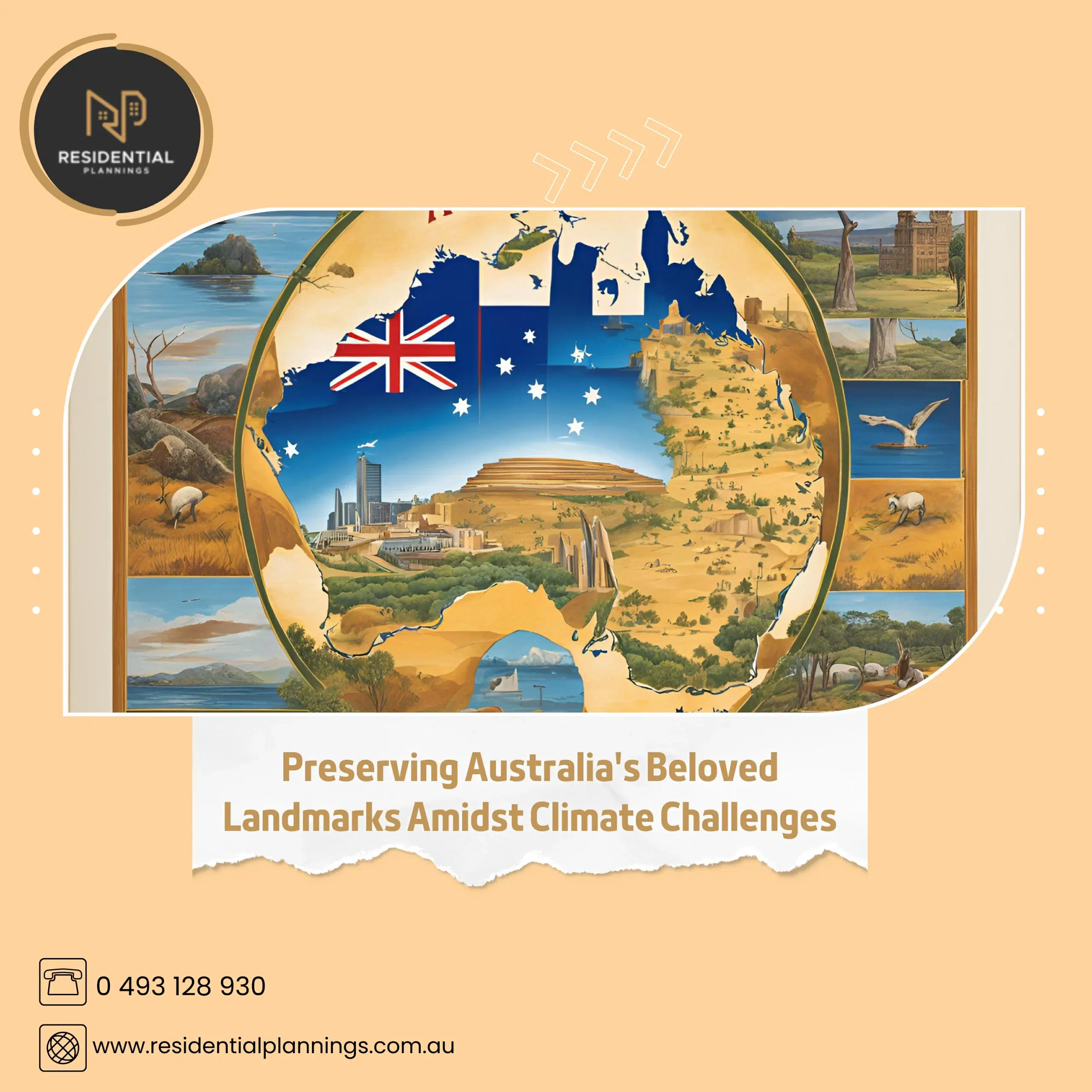Preserving Australia’s Beloved Landmarks Amidst Climate Challenges
Australia boasts a rich tapestry of both natural wonders and architectural marvels, each telling a story of resilience and cultural significance. However, as climate change accelerates, these cherished landmarks face unprecedented threats. Preserving Australia’s iconic structures has become a critical mission, demanding comprehensive strategies and unwavering commitment.
The Looming Threat: Rising Sea Levels
Coastal Treasures at Risk
Rising sea levels present a looming danger, particularly for coastal treasures like the Sydney Opera House. The iconic structure, perched on a UNESCO World Heritage Site, risks erosion and saltwater damage, jeopardising its structural integrity. The threat of inundation and the creeping encroachment of the sea underline the urgent need for preserving Australia’s coastal heritage.
Impact on Marine Ecosystems
The Great Barrier Reef, another UNESCO World Heritage Site, also faces significant challenges. Climate change-induced ocean warming and acidification threaten the reef’s delicate ecosystem. Efforts towards preserving Australia’s marine landmarks involve addressing these environmental stresses and implementing sustainable tourism practices to minimise human impact.
Extreme Weather Events: A Growing Menace
Cyclones and Bushfires
Extreme weather events, increasingly exacerbated by climate change, pose another formidable challenge. Cyclones and bushfires, once sporadic, now strike with alarming frequency and intensity. From the Great Barrier Reef Marine Park Authority buildings to historic bridges, no heritage site is immune to their destructive reach. Preserving Australia’s heritage amidst these conditions requires robust preparedness and responsive measures.
Read this useful topic
Floods and Droughts
Floods and droughts are other extreme events that threaten Australia’s landmarks. The unpredictable nature of these events necessitates adaptive strategies for preserving Australia’s infrastructure. This includes developing resilient water management systems and reinforcing buildings to withstand both excess and scarcity of water.
Proactive Measures for Preservation
Investing in Resilient Infrastructure
Investing in resilient infrastructure is paramount. Enhanced coastal defences, such as seawalls and elevated structures, can mitigate the impact of rising seas and storm surges. Similarly, updating building codes to reflect climate risks ensures new constructions are built to withstand future extremes. These measures are critical for preserving Australia’s built heritage against environmental threats.
Sustainable Practices
Adopting sustainable practices further bolsters our resilience. From locally sourced materials to energy-efficient designs, embracing eco-conscious approaches minimises our environmental footprint while fortifying our built environment. These practices are essential for preserving Australia’s natural and cultural landmarks in a sustainable manner.
Community Engagement and Indigenous Wisdom
Fostering Public Awareness
Community engagement plays a pivotal role in this endeavour. By fostering public awareness and participation, we cultivate a shared responsibility towards heritage preservation. Public campaigns and educational programs can significantly contribute to preserving Australia’s landmarks by instilling a sense of stewardship in citizens.
Integrating Indigenous Wisdom
Moreover, integrating Indigenous wisdom, rooted in millennia of stewardship, enriches our adaptive strategies with invaluable insights. Indigenous practices offer sustainable methods for managing land and water resources, crucial for preserving Australia’s natural landmarks. Collaboration with Indigenous communities ensures that their knowledge is respected and utilised effectively.
Case Studies in Preservation
The Sydney Opera House
The Sydney Opera House, a symbol of modern architectural excellence, faces significant risks from climate change. Preservation efforts for this landmark include advanced engineering solutions to protect against saltwater damage and structural erosion. Additionally, sustainable tourism practices help mitigate the impact of large visitor numbers, ensuring the site remains intact for future generations.
Read this useful topic
The Great Barrier Reef
Preserving Australia’s Great Barrier Reef requires a multifaceted approach. Efforts include reducing carbon emissions to mitigate ocean warming and implementing coral restoration projects to repair damaged sections of the reef. These initiatives are complemented by strict regulations on fishing and tourism activities to minimise further stress on the ecosystem.
Future Directions for Preservation
Innovation in Preservation Techniques
Innovation plays a crucial role in preserving Australia’s landmarks. Advancements in technology, such as the use of drones for monitoring environmental changes and the development of climate-resilient building materials, offer new avenues for effective preservation. These innovations enable more precise and proactive responses to the challenges posed by climate change.
Policy and Legislation
Strong policy and legislation are essential for preserving Australia’s heritage. This includes enforcing stringent environmental regulations and providing funding for preservation projects. Government initiatives can drive large-scale efforts to protect landmarks, ensuring a coordinated and well-resourced approach to heritage conservation.
The Cultural Significance of Preservation
Heritage as Identity
Preserving Australia’s landmarks transcends mere conservation—it is a testament to our collective legacy. These sites embody the history, culture, and identity of Australia, making their preservation crucial for future generations. The continued existence of these landmarks ensures that Australia’s rich heritage remains a source of national pride and inspiration.
Tourism and Economic Impact
Tourism, a significant economic driver for Australia, relies heavily on the country’s natural and cultural landmarks. Preserving Australia’s heritage sites is therefore not only a cultural imperative but also an economic one. Sustainable tourism practices ensure that these landmarks can continue to attract visitors without compromising their integrity.
Conclusion
In the face of climate change, preserving Australia’s iconic structures is both a challenge and an opportunity. By embracing proactive measures, investing in resilient infrastructure, adopting sustainable practices, and fostering community engagement, we can safeguard our heritage for future generations. Integrating Indigenous wisdom and leveraging innovative technologies further strengthen our preservation efforts.
Preserving Australia’s landmarks is a testament to our collective legacy. By marrying innovation with reverence for our past, we chart a course towards a future where our landmarks endure as beacons of resilience and cultural pride. It is through these comprehensive and inclusive strategies that we can ensure Australia’s rich heritage continues to thrive amidst the challenges posed by a changing climate.




